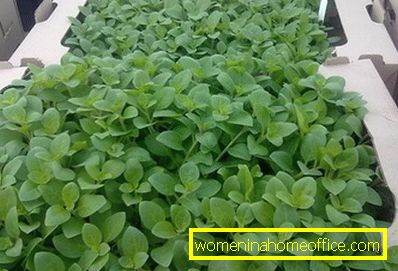Surfinia
Surfinia is an unusual and unique plant of its kind, considered to be one of the petunia hybrids. It belongs to the ampelous group despite the presence of dwarf varieties. Surfinii has a distinctive feature - it is abundant and beautiful flowering, fast growth and hanging stems. With proper care, the plant stems can reach a length of about 2 meters, and multi-colored flowers up to 6 cm.
How to grow surfiniya from seed?


Surfinia is considered one of the varieties of the group of ampelous petunia for growing almost no different from it. It is recognized as a cold-resistant plant and can survive the temperature to minus 3 degrees. Most often, this plant is grown with the help of seeds, but some gardeners propagate it by cuttings. In order to grow surfini from seeds, you will need patience, as this is not an easy process.
They plant seeds in the last decade of February or early March, and a mixture of soil, turf and humus is ideal as a substrate. To improve the growth of seedlings about 1 cm of the upper layer of the earth by re-sowing the seeds are sieved, and a day before sowing the soil is thoroughly moistened. Since the seeds of Surfiniia are tiny, for ease of sowing, they are recommended to be mixed with sand or used in a natural casing. The grains are scattered over the surface of the ground and are not sprinkled with earth, then they are moistened and a mini-greenhouse is created (covered with a film or glass). About 7 days, keep crops in partial shade and temperature not lower than 20 degrees. Throughout the germination of seedlings, the soil is regularly moistened. With proper care of crops, the first shoots should appear in a week. During this period, you can remove the film that protects the plant to harden it.
Surfinia: Cultivation and Care


Surfiniya must be fed with potassium fertilizers, keeping the interval of 2 weeks between supplements. When the first leaves appear on the sprouts, they dive. Amblenaya surfinya tolerates transplant well, but watch out for the roots - they are quite fragile. For abundant and beautiful flowering, place the pots with surfins in a well-lit place, and in case of lack of light, provide artificial light with special lamps. But note that surfiniya does not like to be exposed to direct sunlight.
When another 5 leaves appear on the seedlings, they pinch it, cutting off the tops of the shoots. This will help Surfini to grow into the side, which in turn will contribute to the growth of a lush bush with cute colorful flowers. Having provided young plants with proper care, already in May you can easily plant a fairly large bush of surfinia in an open ground to a permanent place. The same land is ideal as a substrate for planting young plants, as well as for seedlings with medium acidity. If desired, you can add to the soil hydrogel or perlite - this will provide the soil moisture content and uniformity. In order to make the amblenous surfinia look more sprawling, it is planted in the open ground by several bushes at once. If you want to get a green and multi-colored ball from a plant, use special containers with side holes for transplanting.
Before transplanting plants into open ground, it is recommended to first harden young surfinia. To do this, periodically take out young plants to fresh air (on the balcony, for example), and when the threat of frost has passed, you can safely repot surfiniya in a permanent place of growth in a fairly large pot. Mature plants need good fertilizer and abundant watering. Ensure that the soil is constantly moistened. Place the pot with ampelous saffinia in the penumbra, protected from direct sunlight, drafts, rain and strong wind.
With the onset of frost, surfiniia dig and transplanted into flower pots for further cultivation in the apartment. In winter, the temperature for growth is maintained at least 13 degrees, and watering is reduced, but the earth should not turn into an earthen room. Do not forget about mineral fertilizers.
If the ammune surphine is not properly cared for, it can get sick. If you overdo it with watering, the plant may be affected by wet rot. It must be removed, and the plant is carefully treated with special means. Also, Surphynia can be affected by late blight - these are spots of brown color on the plants, which provoke its death. To prevent this disease, treat the plant with preparations that contain copper.
Surfinia is a beautiful perennial plant, one of the varieties of petunia. There is a sufficient number of varieties of this flower, which allows to diversify the garden plot. Usually, they are grown in large baskets, they form a falling waterfall of bright flowers and leaves. Decorate your site or balcony with surfines, making a real Japanese garden.